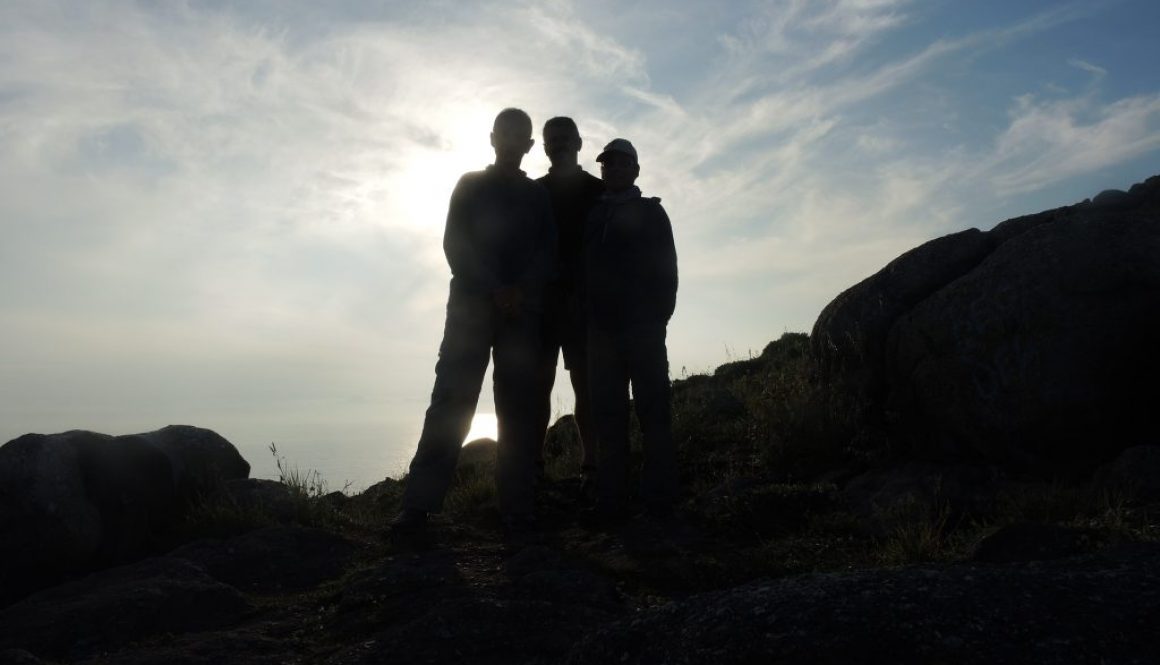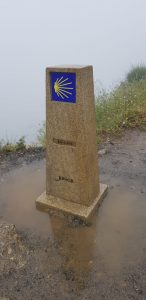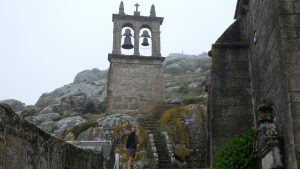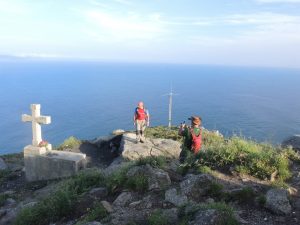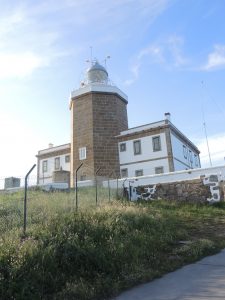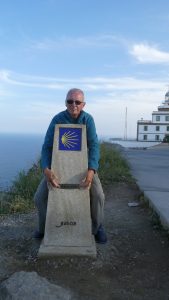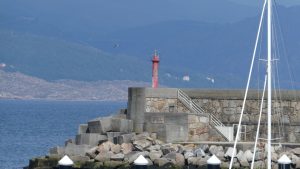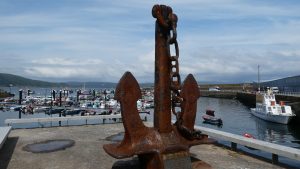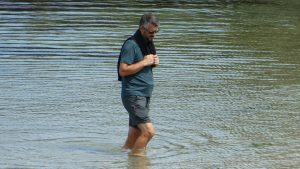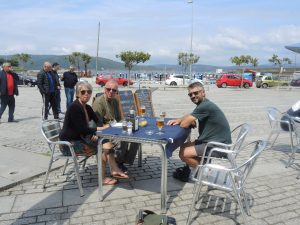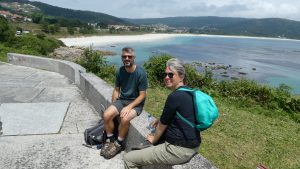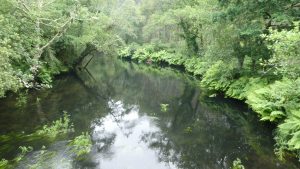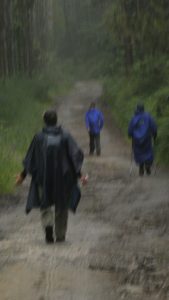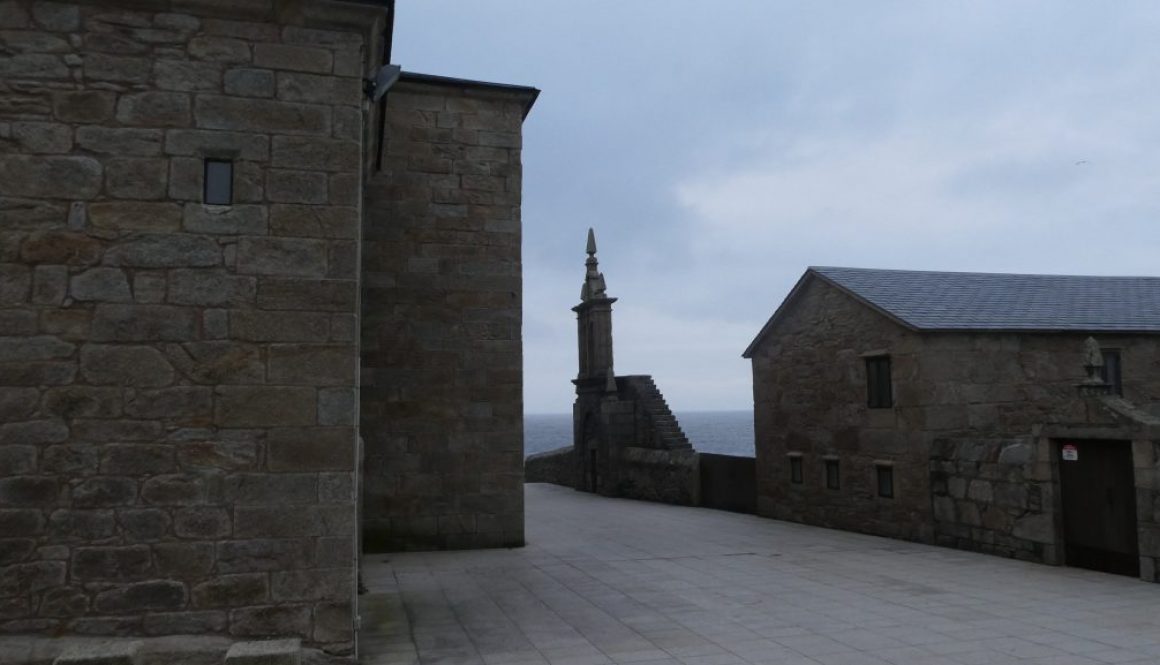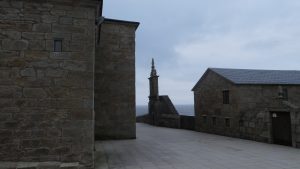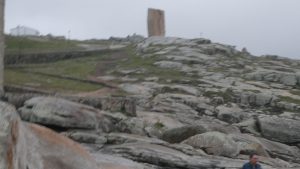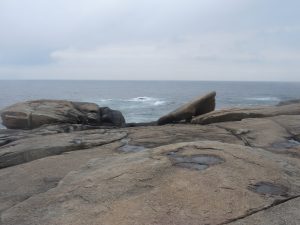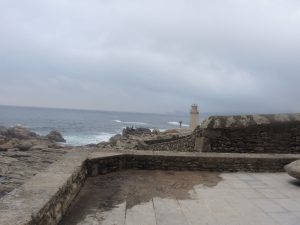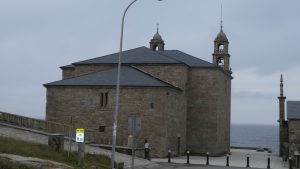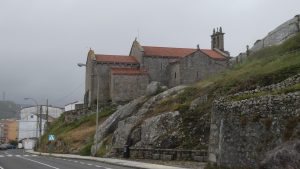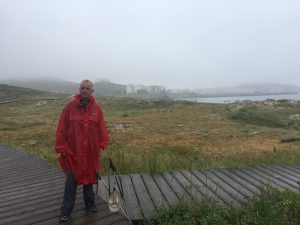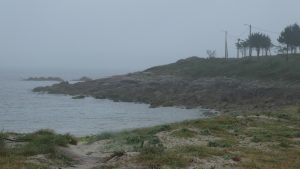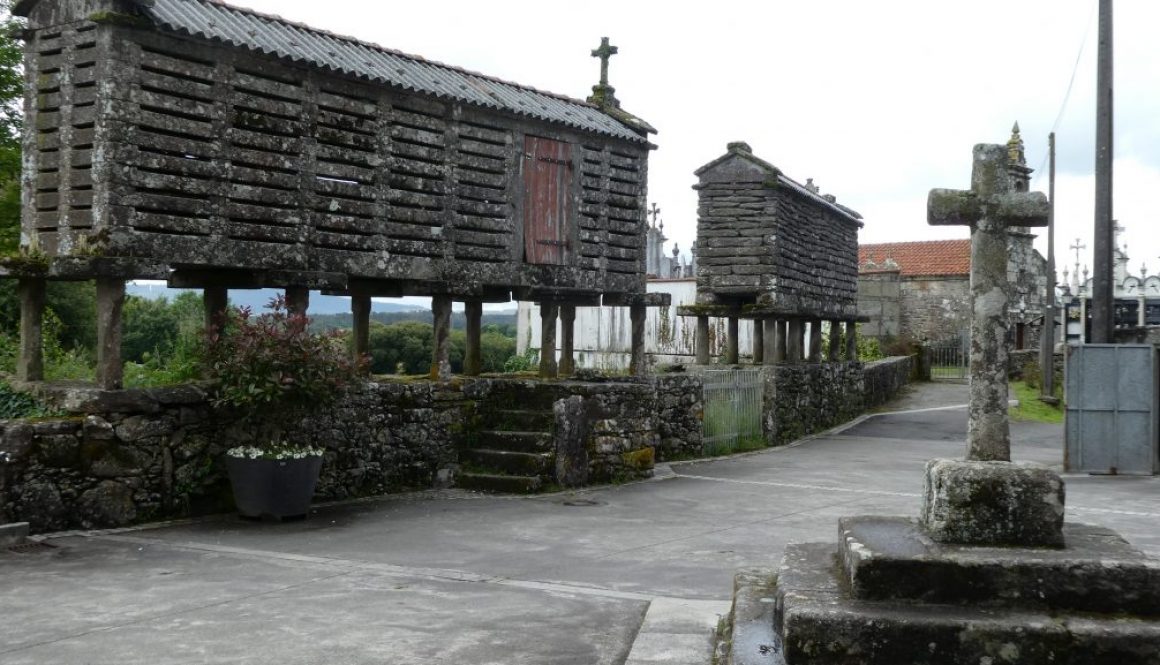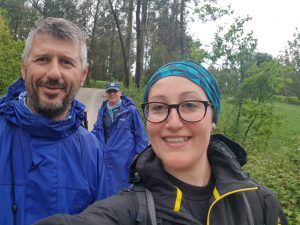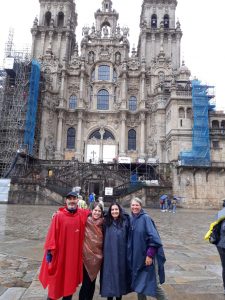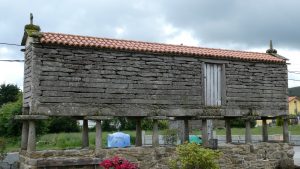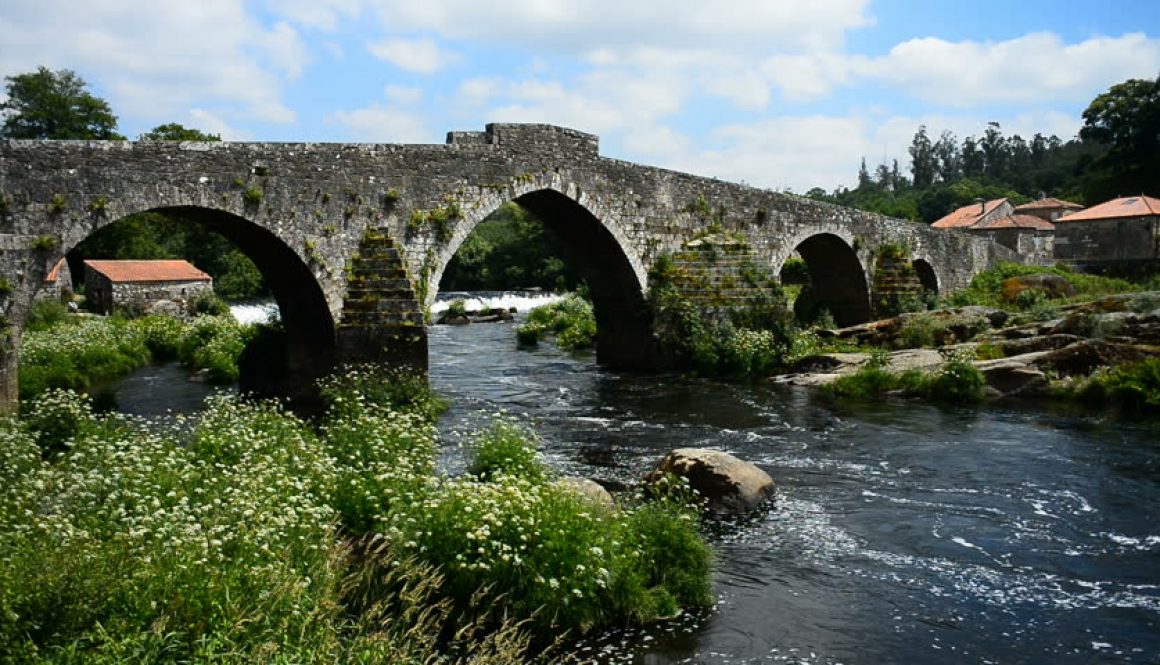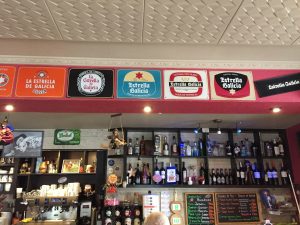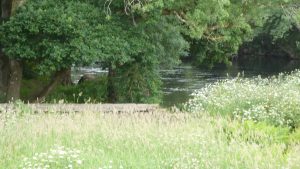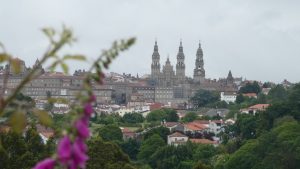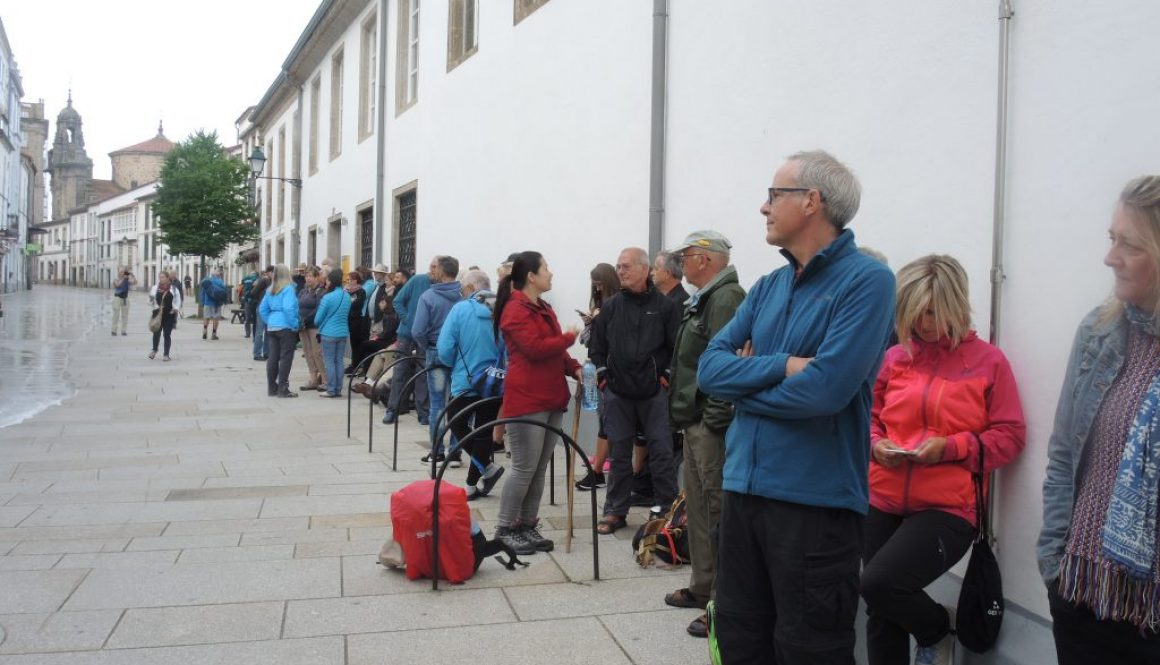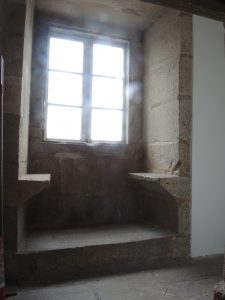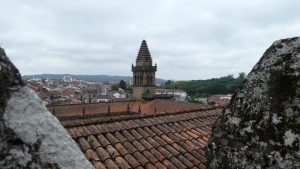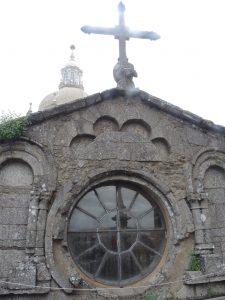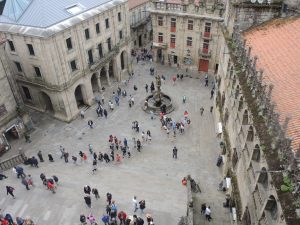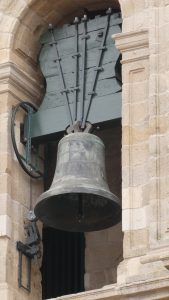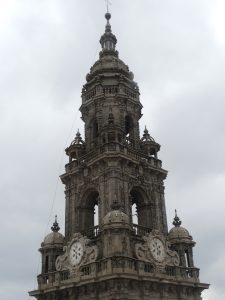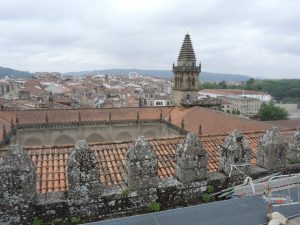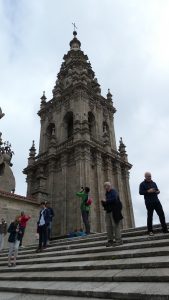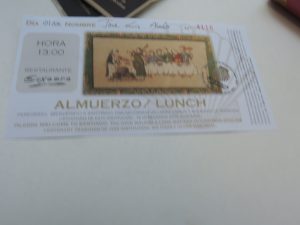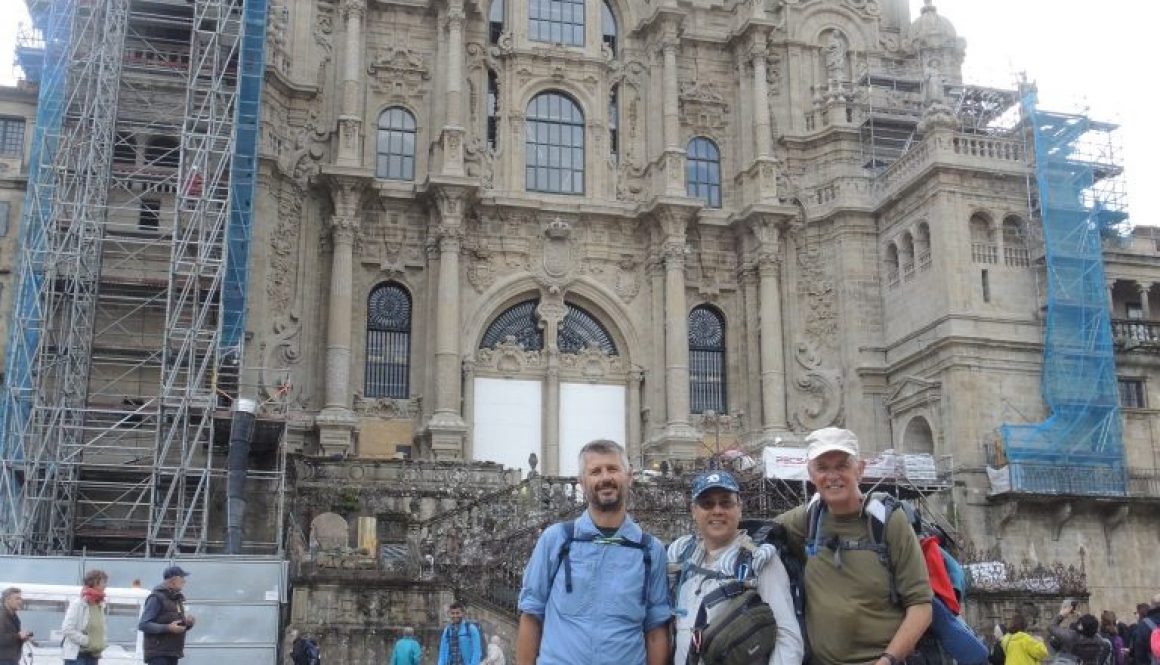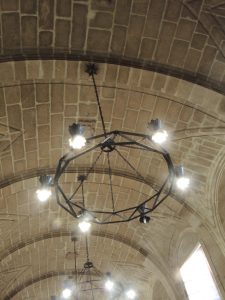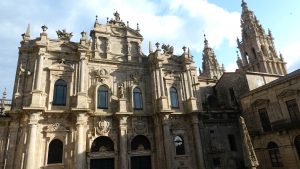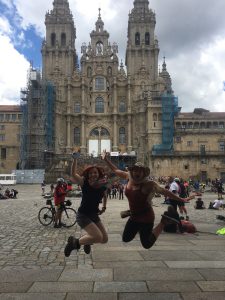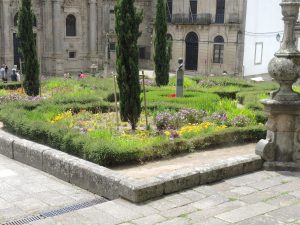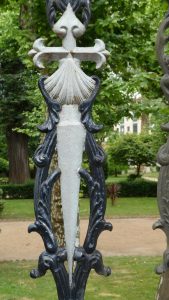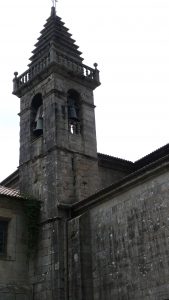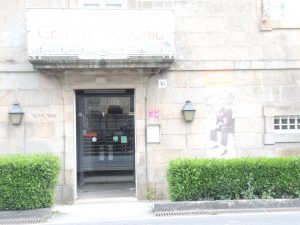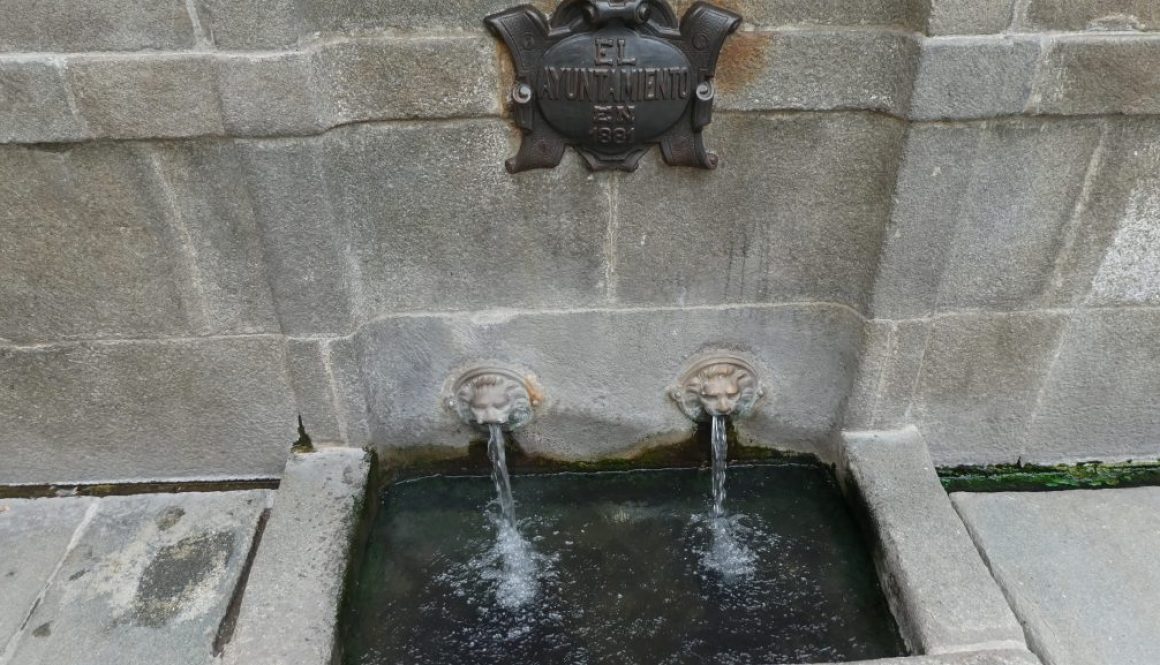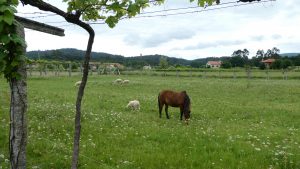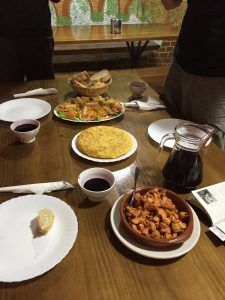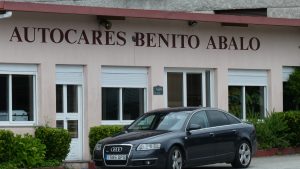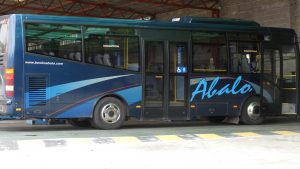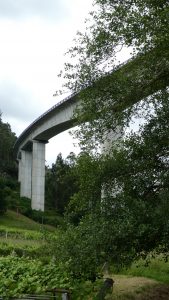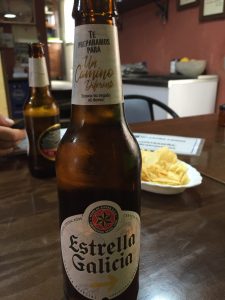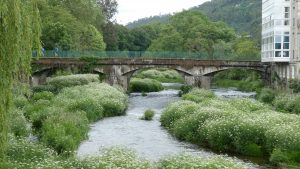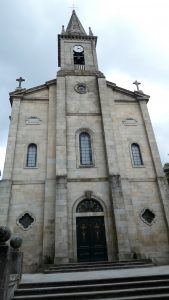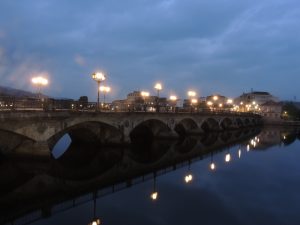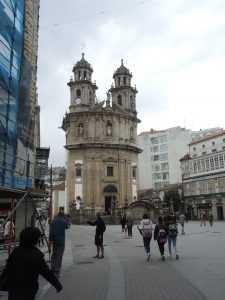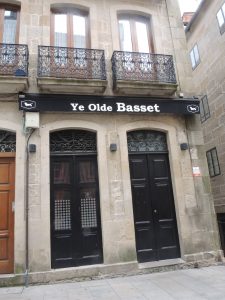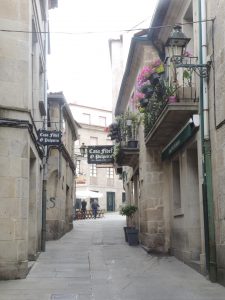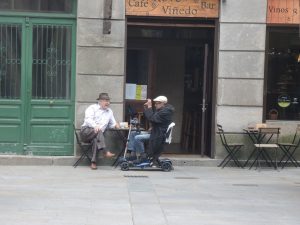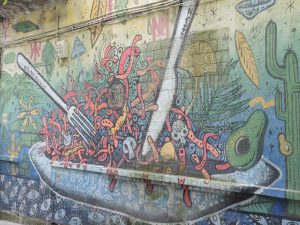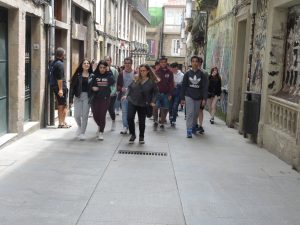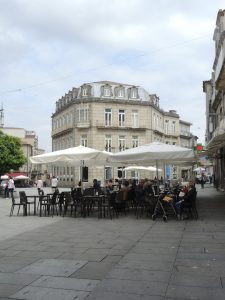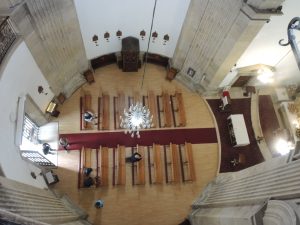Reflections of our Camino Portugues 2018 adventure
The question often asked by friends, family, work colleagues etc – why does anyone do a Camino. As one work colleague succinctly pointed out – why would anyone take 30 odd days to walk 750kms, when you can do it fairly comfortably by car in one day; very true.
However the answer to the question is about as varied as the number of people who do a Camino, and believe you me, there are a lot.
I was musing with Michael whilst waiting at the Santiago airport this morning, that the Camino is gradually being turned into an industry. Of course you do not sense that when you are on the road, but when you arrive in Santiago and sit back and watch the numbers of pilgrims coming into the Obradoiro Plaza, it really is quite surprising. Of course I don’t have any current stats, but just from observations, I would definitely say that the pilgrim traffic has increased by as much as 30% since I was here in 2015.
But back to the question. As I said earlier, the response to that will be different for every single person undertaking the journey. For me, the same reasons apply as back in 2015 – the adventure, the challenge and the achievement. The adventure component is about taking yourself into an unfamiliar country, where you don’t know the culture, the language, the local customs, the people, the geography, the weather etc, and making your way through that land as best you can. Its always a bonus if you can get to enjoy, I think. This time, I have to say that I was very pleasantly surprised by the kindness, the goodness, the helpfulness of the hospitaleros (people who run the hostels and albergues). They will bend over backwards, sideways and every which way to help you with anything and everything, from medical assistance, to local information, to directions, to recommendations about lodging in your next. Really, they cannot do enough for you. It should be also stated that we found the Portuguese people extremely friendly, welcoming and open, and the Spanish are not far behind on that front.
The challenge part of the equation is all about challenging yourself on different levels. Of course, there’s the obvious one – the physical. Whilst we did not have a ‘Pyrenees’ mountain range to cross this time, we came across very little in the way of flat land, all the way from Lisbon to the coastal regions of Galicia. Rocky trails, hills, steep descents, even the huge amount of cobblestone paving that we encountered in Portugal provided physical challenge. Equally, though, there are the mental challenges. Probably my worst day on that score was the day we walked into Tomar (a few days out of Lisbon). It was only 29.7kms which was by no means our longest, but it was the heat, the walk along roads, the misleading signage; it was likely a whole bunch of factors, all summed up, which came together to fatigue me physically to the point where I thought I could not make it; but you take a break, have a rest, have an orange (thanks Michael) and you get back on the road and go again. May I say that the last few days constant wet weather also played on my mind, but the endpoint was on sight, so it wasn’t a debilitating factor.
The achievement, to me, is all about breaking the journey into small manageable chunks, much like when you undertake any major project. When you look at a task like walking 750kms, it certainly is a daunting one, but when you divide it up into manageable distances of 25 – 30 KMs, it becomes much more attainable. Of course the big challenge is to contend with this day on day. But when you achieve and complete each stage, it gives me both a sense of confidence to tackle the next day, as well as a sense of achievement in having managed to get another stage under your belt. That’s one of the primary reasons I enjoy a beer after a long hot day on the trail – to savour the achievement and maybe mull it over with other pilgrims who have managed to do the same. It goes without saying that, on reaching Santiago De Compostela is a huge personal achievement. One only has to wait around Obradoiro Plaza from about 11:00am daily and watch the constant stream of pilgrims coming into the square from all sorts of directions – from the Camino Frances, the Camino Portuguese, the Camino Norte etc, to physically get a sense of the gammit of emotions that are on display for all to see, and of course achievement and relief are a huge part of that.
Jose, Michael and I did so much planning for this trip that it would be hard to quantify the effort. The physical training ( walking on weekends and any other available times), the gear and equipment was all chosen carefully and for specific purpose, the weight of each item was scrutinized to within an inch of its life, the IT equipment, the accommodation options ….. I could go on and on; suffice to say that we planned everything meticulously. Even after all that, our backpacks were still much too heavy. Having said all that, I think our planning paid off in the long run. Thankfully there really wasn’t too much that went awry in any major way. We did slightly change our stages in a few places, but that was more about convenience than necessity. Of course, were we to do it all again, there would be some ‘tweaking’. For instance, personally, I would not walk the Lisbon to Porto stages again, because it was predominantly along busy roads, but having said that, if we had not done those stages, we would not have got to know people like Julie, Eloisa, Francesca, Michelle, James, Jana, Roddy and Ger and a whole host of others who greatly enriched our Camino, virtually from day one, and to whom I will be forever grateful for their friendship and the sharing of their Camino.
Someone once said to me that they would find a Camino too boring, were they to do it, and whilst that might be the case, I would think the exact opposite. Yes, there are long stages, sometimes of 35kms, where you are walking for upwards of 8 hours. Yes sometimes the landscape is not ideal, or you’re walking along a busy road and have to really keep your wits about you, but I cannot think of one time when I was bored in any way. Whether you’re walking with friends, a new Camino buddy, someone from some other part of the world (and believe me, there are people from all corners of the globe walking), or whether you’re walking alone, on the lookout for those pesky little yellow arrows that guide your path, but are sometimes hidden by a branch, or a parked car, or have faded due to people stepping on them, or they are placed strategically so as to confuse you (or so it seems), I don’t recall ever being bored, but I guess that could be just me?
So, in the final analysis, what are the significant aspects of the Camino?
It’s not just the physical fitness; anybody in reasonable condition can do it; we’ve come across people in their seventies and eighties who are doing the Camino. My opinion is though that you should be doing some level of training before you leave.
It’s not just the equipment; we’ve come across people who travel very lightly – no walking poles, no sleeping bag, only a couple of changes of clothes etc and they seem to get there ok. Having said that though, I greatly value the quality of my shoes, my walking poles, my back pack etc. All this stuff is not essential, but it can make your life on the Camino somewhat more comfortable.
It’s certainly not, what we call, the IT stuff (phones, cameras, iPads, pocket WiFi etc). Some camino guide books actively encourage you NOT to take this stuff because it supposedly distracts you from the central focus; ie. getting the most out of your camino environment. But, the IT stuff certainly comes in handy when you’re dead tired and wet after a long hard day and are trying to find your way, the shortest way, to your albergue. It’s also very convenient to be able to let family know how you’re going, or in the case of an emergency, call a taxi or something similar.
Is it the physical walking itself? Whilst that’s certainly a core component of the whole thing, to my way of thinking, it probably is not the most important. Of course, with out the walking, there is no Camino and the whole point of the exercise is to get from point A to point B along the prescribed route either by foot, by bike or by horse. In the space of a day, you walk past so many towns, villages, farmlets, church, chapels and so on that us pilgrims would often muse about where we had come from this morning, or where we had stayed last night. You cover so much territory in a single day, that every one struggled to remember where we were yesterday, let alone 5 days ago – hence the idea of keeping a blog.
Is it the religious, spiritual or faith aspect of the Camino. For me personally, this brand of Catholicism is not my cup of tea. There is far too much hierarchy, ritual, adherence to all these rules, treasury rooms, gold galore, an almost infinite array of artistc treasure, icons, statues, etc etc etc. The brand of Catholicism that appeals to me is more basic and much simpler. However, that’s not to say that the Catholic church here is to be ridiculed or criticised. I’m sure it does lots of good throughout the communities and provides great support for its local members. Having said all that, we met quite a number of pilgrims, both for the Santiago pilgrimage and the Fatima pilgrimage, who were extremely devout and had an unshakable faith. Others acknowledged a certain spiritual aspect to the Camino, and yet others had no spiritual dimension completely. I would like to highlight, at this point, that the Fatima experience was something totally unexpected. Whilst in Tomar, we had a planned lay day, during which we had figured to go to Fatima, some 30kms away (by bus). We had not factored in, and did not realise that on the day we were there, was the 101st anniversary of the apparition of the Virgin Mary to 3 local children. When we got to Fatima at around 08:30 there were already literally thousands of pilgrims descending on the place. By the time the Mass started, there were 110,000 people present for the outdoor Ceremony, concurrently celebrated by countless priests and bishops, in several of the more common languages. The outward display of devotion of some of these people had to be seen to be believed. People walking on their knees to the shrine of Mary, other people carrying depictions of certain body parts (I presume that they had an ailment in that general area), people carrying huge candles and rosary beads. People jostling their way through the thick crowd, to get to communion. It was overwhelming in a sense.
The food is an important aspect for some on the Camino. I will say, from a personal point of view that the food both in Portugal and Spain was better than adequate. I was surprised in Portugal at the amount of cod fish dishes.on offer. They say that in Portugal, they have 370 different ways of preparing cod fish, which allows them to have a different dish for every day of the year. Apart from the cod fish, there were lots of other dishes on offer, with a very international clientele in mind. The main thing for me was that we didn’t starve – far from it.
The accommodation aspect is something very important. I’ve often said that the Camino is not for everyone. Sharing of sleeping quarters,. Bathroom and toilets can be a bit confronting, especially to the uninitiated. I can well understand how this feature of Camino life can turn people away. But there are alternatives. With the expansion of the Camino infrastructure in recent times, there are now different types and classes of accommodation available to suit the more conservative pilgrims.
I could go on and on about different aspects of a Camino and indeed there have been many books written about the topic. As far as I’m concerned, the most important aspect by far of the Camino is the people you get to meet and share the daily toils, the daily pain, the daily joys, the everpresent variety of experiences that have happened that day. You can share them over a beer, a dinner, a breakfast or just in a common area of some albergue. We were just saying a couple of days ago that people who come on the Camino all start out on the same footing, no matter whether they are lawyers, judged, teachers, CEOs. It does not matter what you are in your other life, the Camino is a great leveller. We met precious few people who consistently big noting themselves and most of those were boasting about how many caminos they had under their belt or how far they walked on such and such a day. I never heard anyone getting on their high horse regarding their career or their status in their community. We met very few yahoos on the Camino. Most people were too stuffed by the time 10:00 o’clock came around that they were tucked into bed, as opposed to being out there and partying.
I think what I’m getting at is that the Camino attracts a certain type of individual; one who is maybe searching for something not yet found, or one who can see positives from just putting yourself out there for a large slice of your day, one who is looking for answers from beyond the normality of life. I’m sure a lot of people do it purely for the people contact, for the chance to meet other like-minded people, so that they can continue the journey together. Of course on the other hand, some Caminos are very isolating, like the Norte, or the Via De La Plata; so if you’re wanting solitude, that’s where you might find it.
In the final analysis, I think the answer to the initial question – why are you doing a Camino is – because it’s your Camino.

